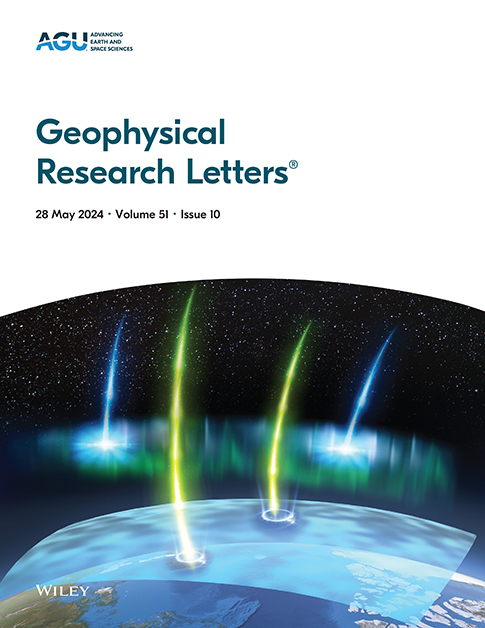Large Carbon Losses From Burned Permafrost Peatlands During Post-Fire Succession
IF 4.6
1区 地球科学
Q1 GEOSCIENCES, MULTIDISCIPLINARY
引用次数: 0
Abstract
The carbon (C) storage of boreal peatlands is threatened by an intensifying wildfire regime. Between 2019 and 2023 we used eddy covariance and surface closed chambers to monitor two permafrost peatlands in boreal western Canada that burned in 2019 and 2007. Deeper thaw, warmer soils, and slow vegetation recovery caused the 2019 Burn to be a net carbon dioxide (CO2) source (+130 g C m−2 yr−1) for four years post-fire, despite reduced soil respiration. The 2007 Burn was a sink (−11 g C m−2 yr−1) 13–15 years post-fire, similar to undisturbed peatlands. We estimate that wildfire caused a loss (∼2.9 kg C m−2) from permafrost peatlands, with ∼1.7 kg C m−2 due to combustion and ∼1.2 kg C m−2 due to net CO2 losses during post-fire succession. This highlights the importance of the post-fire CO2 losses and emphasizes the vulnerability of permafrost peatland soil C to fire.火后演替过程中永久冻土区的大量碳损失
北方泥炭地的碳(C)储量受到日益加剧的野火的威胁。在2019年至2023年期间,我们使用涡动相关方差和地表封闭室来监测加拿大北部西部的两个永久冻土泥炭地,这些泥炭地分别于2019年和2007年燃烧。尽管土壤呼吸减少,但更深的解冻、更温暖的土壤和缓慢的植被恢复导致2019年的燃烧在火灾发生后的四年中仍是二氧化碳(CO2)的净来源(+130 g C m−2 yr−1)。2007年的Burn是火灾后13-15年的碳汇(- 11 g C m - 2 yr - 1),类似于未受干扰的泥炭地。我们估计,野火造成了永久冻土泥炭地的损失(~ 2.9 kg cm - 2),其中约1.7 kg cm - 2是由于燃烧造成的,约1.2 kg cm - 2是由于火灾后演替期间的净二氧化碳损失。这突出了火灾后二氧化碳损失的重要性,并强调了永久冻土泥炭地土壤C对火灾的脆弱性。
本文章由计算机程序翻译,如有差异,请以英文原文为准。
求助全文
约1分钟内获得全文
求助全文
来源期刊

Geophysical Research Letters
地学-地球科学综合
CiteScore
9.00
自引率
9.60%
发文量
1588
审稿时长
2.2 months
期刊介绍:
Geophysical Research Letters (GRL) publishes high-impact, innovative, and timely research on major scientific advances in all the major geoscience disciplines. Papers are communications-length articles and should have broad and immediate implications in their discipline or across the geosciences. GRLmaintains the fastest turn-around of all high-impact publications in the geosciences and works closely with authors to ensure broad visibility of top papers.
 求助内容:
求助内容: 应助结果提醒方式:
应助结果提醒方式:


